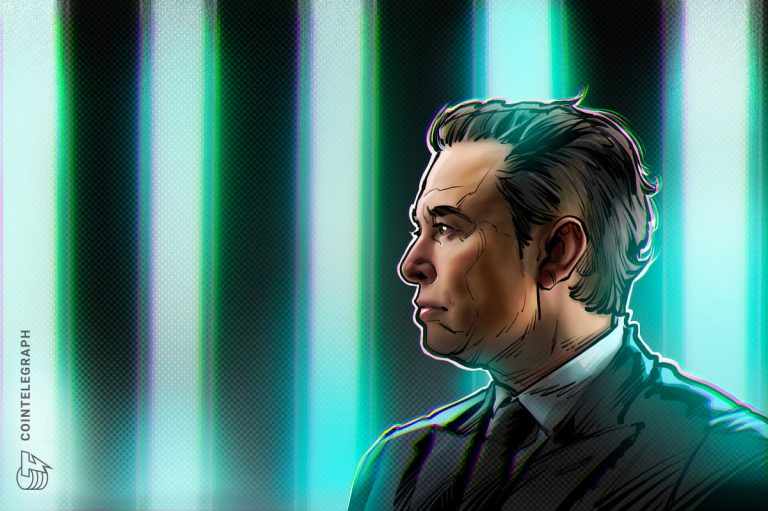Opinion: James Stradwick, Executive Director of the Starknet Foundation
In Washington, the outlook surrounding the use of new technologies has changed. Tesla CEO and presidential advisor Elon Musk’s proposition incorporates blockchain technology into the United States. Musk says much of the drive is rooted in concerns about the sustainability of current government spending. With its immutable ledgers and a transparent audit trail, blockchain is waiting in the wind, offering potential solutions to manage huge financial situations.
Musk advocates for a unified information system that allows for real-time payments, eligibility and government resources, and encourages discussion of the pros and cons of implementing such tools at the government level within the fintech community. This idea is convincing as the description of the blockchain can effectively promise accountability, traceability and streamlined operations. The shift here, namely, to blockchain-driven government infrastructure, presents several challenges that could prove to be beyond what the new administration had previously anticipated.
Blockchain as a state appendage
Concerns about stakeholders circumnavigating the blockchain world revolve around the scale of government operations. Every day, the US government processes thousands of transactions in various sectors. The feasibility of Mask’s vision is questioned simply as a result of its own unique complexity. The provable security provided by blockchain technology must be provided when processing millions of daily transactions without buckling under the load to succeed at this scale.
The proposed solution by Musk is a hybrid model using the “Validium” zero knowledge rollup. The speed and efficiency of modern ZK rollups, which can process hundreds of millions of transactions every day, has the potential to ensure that each citizen’s share of government transactions is unharmed and verifiable. The rapidly evolving nature of the technology shows that this is achievable, scaling to handle even higher transaction volumes over the next few years.
Unfortunately, this has its own hurdles in its own right. Especially when integrating public services that tend to operate on silos.
Human Questions
The big irony here is that Musk’s government’s declaration of inefficiency as a reason for the ongoing shake-up could be one of the biggest reasons why it doesn’t move forward with the plan. The real obstacle here is not so technical, as it is a deep, irreparable person. The transition from Archaic Legacy Systems to a more modern infrastructure for blockchain requires not only software updates, but also a global reprogramming of the workforce. Government officials embedded in the bureaucracy are used in outdated systems, and retraining them is not a small task.
Recent: US Housing Sector Blockchain, stablecoin payments and monitoring grants: Report
Furthermore, current government databases are a maze of undocumented and illegible data. The inherent task of extracting this data into a blockchain infrastructure and migrating it is a task that could require serious investment. For all its elegance, the blockchain was not built to combat such inefficiency. Despite the possibility of handling complex, distributed environments, the difficulties present in the system itself can make transitions more complicated than labor intensive.
The balance between transparency and confidentiality
Transparency in federal spending is also a factor worth highlighting. The innate strength of blockchain and its extremely lauded appeal is its strength. Citizens allow them to track how public funds are allocated and spent. The mask premise can promote an invisible level of accountability, which makes transactions, all power delegation, and all resource distributions publicly visible in real time.
The problem is that sensitive government data, classified information, or personal identification can be dangerously exposed on public blockchains. Musk’s response is to try to tether data that is sensitive to the private channels of the blockchain, allowing only individuals with appropriate approval or individuals from a particular department to access sensitive information. In theory, this addresses security concerns while enabling blockchain openness.
The offer of masks could lead to a more efficient and accountable system. The social drive behind this is a long-standing criticism of wasted spending and misallocation of resources. It could also strengthen the democratic process by holding civil servants accountable. Decentralized authority has a major impact on empowering citizens through real-time access.
There is a positive aspect to the vision. It raises deep questions. While technology can address human governance challenges, it risks fundamental changes in how we understand privacy and accountable authority. As we question the nature of governance, we need to carefully consider the role of blockchain and what it ultimately means for the future of society as a whole.
Opinion: James Stradwick, Executive Director of the Starknet Foundation.
This article is for general informational purposes and is not intended to be considered legal or investment advice, and should not be done. The views, thoughts and opinions expressed here are the authors alone and do not necessarily reflect or express Cointregraph’s views and opinions.




